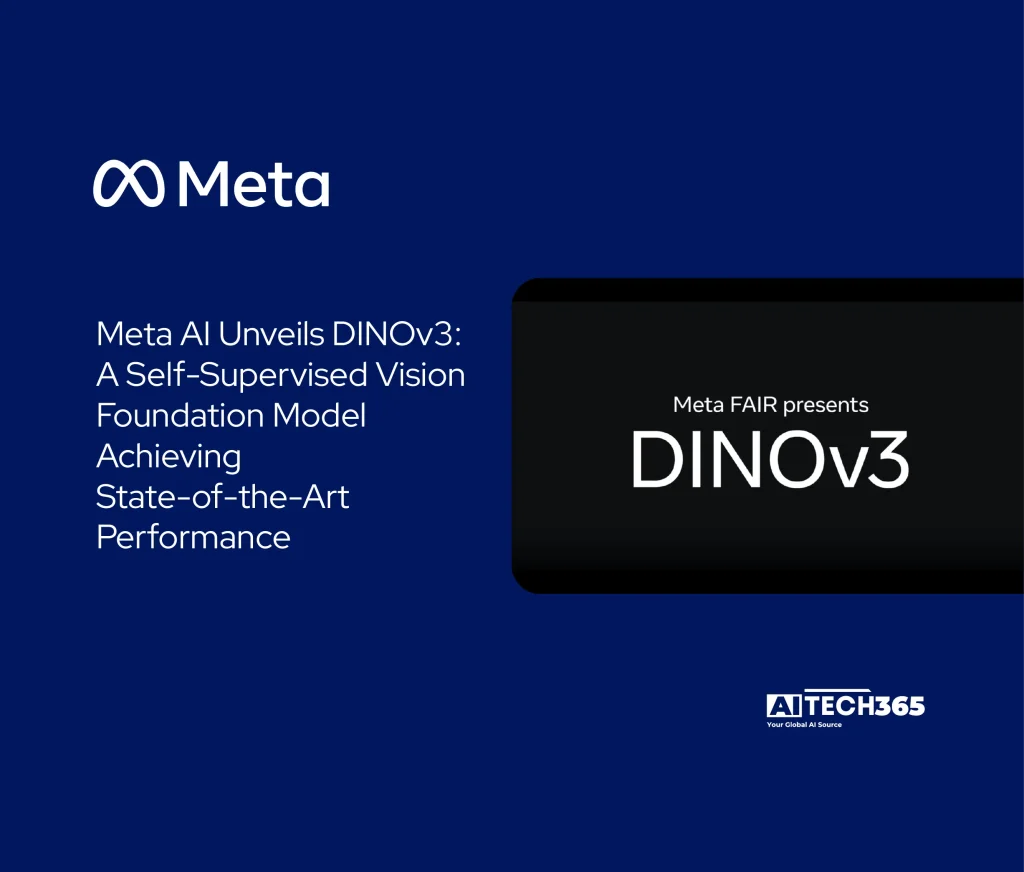Meta announced the release of DINOv3, a cutting-edge self-supervised vision foundation model that achieves unprecedented performance across a wide array of computer vision tasks. The model raises the bar for versatility and accuracy by forgoing reliance on memory-intensive labeled datasets reaching new heights in autonomous feature extraction.
DINOv3 scales self-supervised learning for images by adopting a comprehensive model suite that addresses diverse use cases. This includes a broad selection of Vision Transformer (ViT) sizes and efficient ConvNeXt architectures optimized for deployment in resource-constrained environments.
The model is trained on an extraordinary scale 1.7 billion images delivering a sevenfold increase in model size and a twelvefold expansion in training data compared to its predecessor. DINOv3 integrates architectural innovations, notably Gram anchoring to counteract dense-feature map degradation, and axial RoPE with jittering to enhance robustness across varying image resolutions and aspect ratios.
DINOv3 yields high-resolution, dense feature maps capable of driving superior performance in image classification, semantic segmentation, and object detection. It delivers state-of-the-art results even when applied without fine-tuning consistently outshining specialized models across a broad spectrum of vision tasks.
Also Read: Alibaba Launches Wan 2.2: Open Source Video Made Accessible
As part of its release, Meta provides a thorough suite of pre-trained vision backbones under a commercial license. The suite encompasses smaller models that outperform CLIP-based derivatives and alternative ConvNeXt architectures, making DINOv3 suitable for both large-scale and on-device applications. The release also includes downstream evaluation heads, sample notebooks, and full training code to facilitate seamless integration by developers.
Real-world applications of DINOv3 are underway: The World Resources Institute (WRI), supported by the Bezos Earth Fund, is harnessing DINOv3 to enhance environmental monitoring capabilities. In a recent project focused on tree canopy height estimation in Kenya, DINOv3 reduced the average error from 4.1 meters to just 1.2 meters a substantial improvement over DINOv2.. NASA’s Jet Propulsion Laboratory is utilizing the model to empower exploration robots on Mars, enabling complex vision tasks under strict compute constraints.
Meta offers DINOv3 as a scalable solution for industries requiring advanced vision capabilities with minimal supervision, including healthcare, environmental protection, autonomous transportation, retail, and manufacturing.

